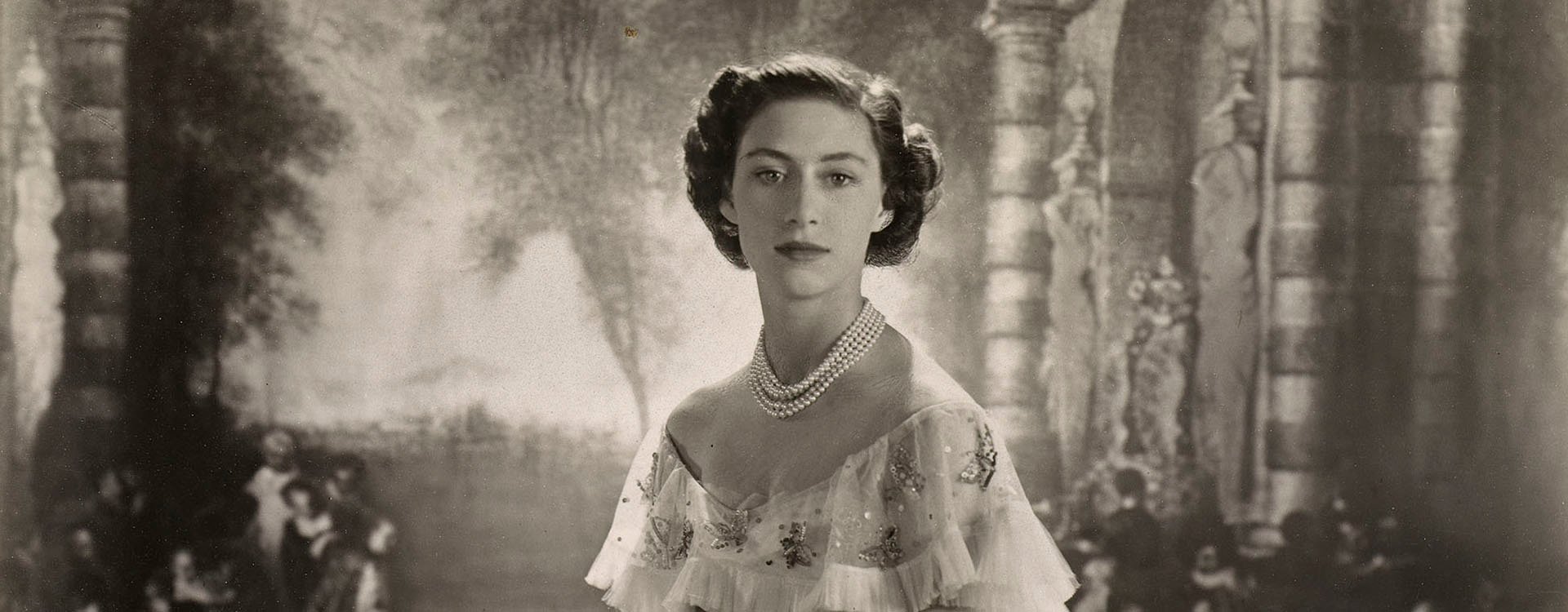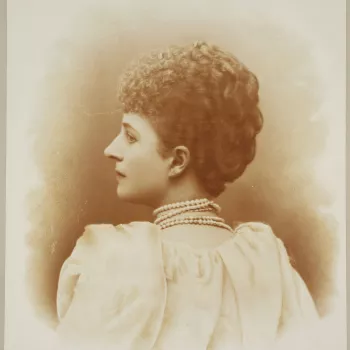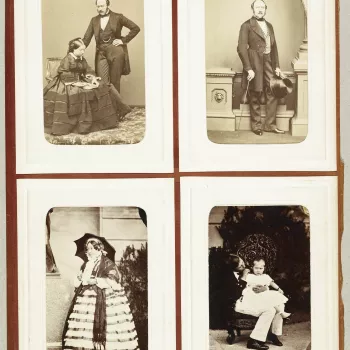Cecil Beaton - Royal Photographer
Find out about Cecil Beaton’s life and his iconic photographs of the British Royal Family.

Reading time: 6 minutes
Sir Cecil Beaton was one of the most celebrated and influential photographers of the 20th century. His association with the British Royal Family spanned across six decades, making him one of the most represented portrait photographers in the Royal Photograph Collection.
There is always something dramatic about the job of permanently recording the features of a human being, it is the theatre brought to everyday life
Cecil Beaton
Life and career
From an early age, Cecil Beaton (1904–80) experimented with photography, even taking pictures of his younger sisters with his nanny’s camera. As assistant to photographer Paul Tanqueray, Beaton seized every opportunity to develop his own signature style, fuelled by his fascination with glamour and high society. His photography granted him access to aristocrats and stylish socialites of 1920s’ London, the ‘Bright Young Things’, securing him prestigious commissions and eventually a contract with Vogue in 1927.
His work for Condé Nast’s magazine in New York and his photographs of theatre and Hollywood film stars sealed Beaton’s formidable reputation as both portrait and fashion photographer, with high demand for his work on both sides of the Atlantic. Commissions from the Royal Family flourished in the 1930s, which gave Beaton great personal satisfaction.
While mostly remembered today for his successful career as a photographer, Beaton was also a talented costume and set designer, writer, and painter. He won Academy Awards for Best Costume Design for the films Gigi (1958) and My Fair Lady (1964), for which he was also awarded a second Oscar for Best Production Design. Beaton was knighted by Queen Elizabeth II in 1972.
Cecil Beaton in the Royal Collection
1920s-1940s
Beaton’s first commission from a member of the Royal Family came in 1927 from Princess Louise, the sixth child of Queen Victoria and Prince Albert. Such commissions flourished in the 1930s, in particular from the Duke and Duchess of Kent, and the Duke and Duchess of Windsor, two of the most fashionable couples at the time.
It is believed that Princess Marina, Duchess of Kent, had recommended Beaton to her sister, Princess Olga of Yugoslavia, in July 1939 while on a visit to London. The results, shown to Queen Elizabeth, later The Queen Mother, seemed to have influenced her to commission Beaton to photograph her two days later.
In choosing me to take her photographs, the Queen made a daring innovation. It is inconceivable that her predecessor would have summoned me - my work was still considered revolutionary and unconventional
Cecil Beaton
Beaton strove to create a new image for the queen which was both modern and traditional. He transformed her from an elegant, albeit conventional, woman and mother into a romantic figure of ageless beauty, by portraying her by the modern medium of photography while referencing the long tradition of the painted portrait, exemplified by the backdrops. The dazzling outfits designed by Norman Hartnell and the addition of the flowers contributed to the marvellously flamboyant, fairytale-like results.
During the Second World War, Beaton worked as an official photographer for the British Ministry of Information. In 1940–1, his assignments were based in Britain, documenting domestic efforts and damage from the Blitz. Later, he was sent first to the Middle East and then to East Asia, where he travelled to India, as well as Burma (now Myanmar) and China. During this time, Beaton was also entrusted to portray the British Royal Family as a symbol of unity, stability and hope for the whole nation, as well as for troops and people across the world.
After the war, Beaton returned to portraying members of the Royal Family such as Princess Margaret in his distinctive and glamorous style, incorporating the use of flowers from his own garden and painted backdrops.
Queen Elizabeth II’s Coronation
The apex of Beaton’s career, both personally and professionally, was his appointment as official photographer for the Coronation of Queen Elizabeth II in 1953.
The photographer sought to capture the symbolism and theatricality of the historic event. Queen Elizabeth II was portrayed in full regalia against a painted backdrop of the Lady Chapel in Westminster Abbey, fixed on a window recess of the Green Drawing Room at Buckingham Palace. The combination of the studio lighting with natural light filtering from above and through the backdrop provided what historian Peter Quennell described as ‘a strangely transfiguring radiance that encircles those who occupy a throne’.
1960s-1970s
In the late 1950s and throughout the 1960s, a new generation of photographers emerged on the scene with modern and bold styles, in keeping with popular culture and aided by new developments in mass media. Public interest shifted towards the colourful worlds of fashion, television and pop music, in recognition of the growing celebrity culture.
Keeping in step, Beaton’s style also evolved and stark aesthetics replaced painted backdrops. Glamorous, formal portraits of the Royal Family were replaced by more intimate depictions.
Beaton continued to be commissioned by members of the Royal Family until the end of his life, although less frequently by the monarch. His final royal commission came from Prince and Princess Michael of Kent and took place in their apartment at Kensington Palace in November 1979, two months before Beaton’s death.
Beaton and the Royal Family: a special bond
Beaton formed a harmonious rapport with many members of the Royal Family over the decades but seemed to have shared a special bond with Queen Elizabeth, The Queen Mother, since their first sitting together in 1939.
In 1963, to thank Beaton on receipt of his book Royal Portraits, the Queen Mother wrote: ‘I find it very nostalgic looking through the pages. The years telescope, & I suddenly remembered what I felt like when I wore those pre-war garden party clothes – all those years ago. It is absolutely fascinating to look back, and I feel that, as a family, we must be deeply grateful to you for producing us, as really quite nice & real people!’
Those words summarise Beaton’s relationship with the Royal Family and the major role he played in shaping their image.
You can see some of Beaton's photographs in our exhibition Royal Portraits: A Century of Photography.











